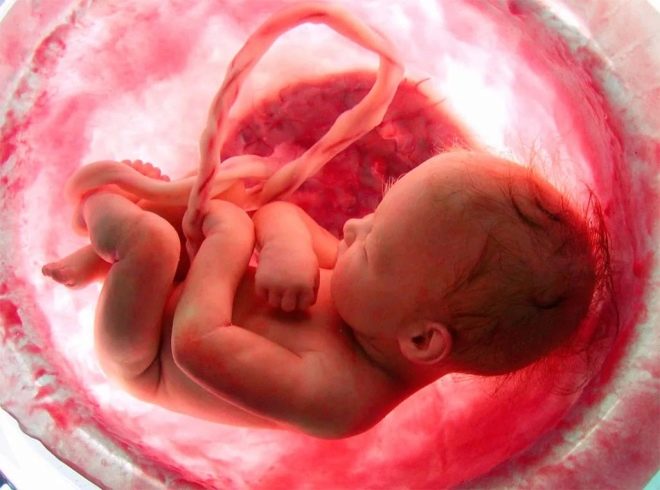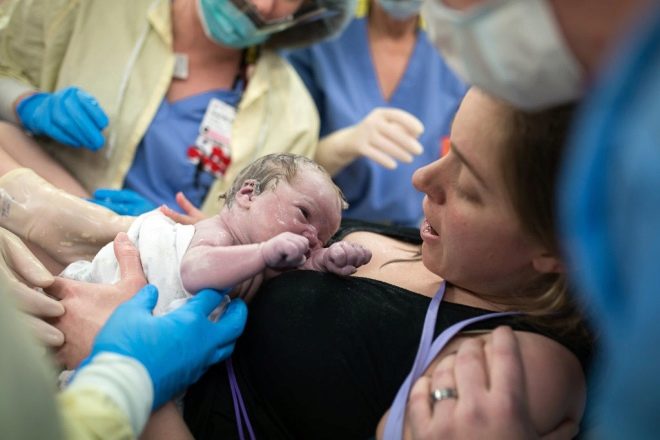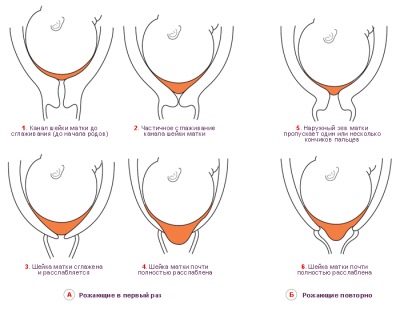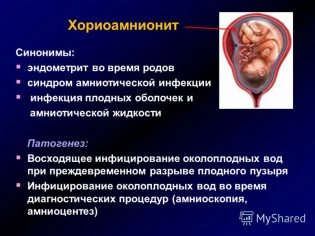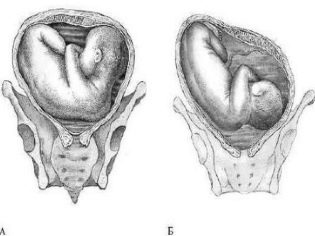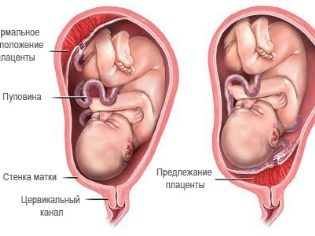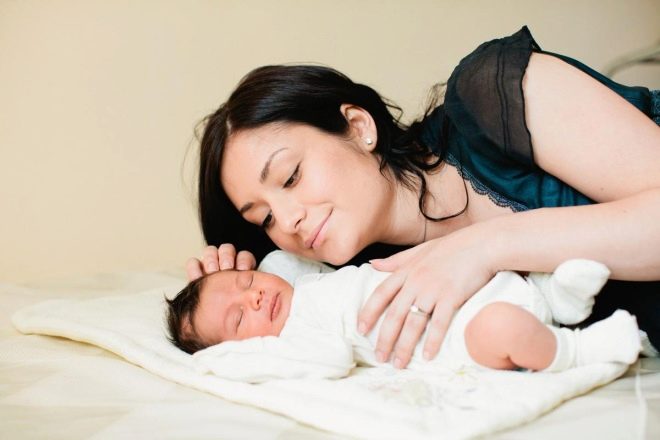Births at 41-42 weeks of pregnancy
If the date of birth, defined as the estimated, has long passed, and the birth does not occur, then after 41 weeks of pregnancy, the question is usually put an edge. After all, a postponed pregnancy is undesirable for either the mother or the baby. How are the births at 41-42 obstetric week, whether they have distinctive features, in what cases stimulation of labor activity is allowed - we will tell about this in this material.
Opinion of doctors about the term
In the understanding of most ordinary people, 40 weeks is the deadline for gestation. If childbirth does not occur during this period, women begin to worry. Their anxiety is warmed up by relatives, girlfriends, the Internet, which frightens a pregnant woman with the consequences of a post-term pregnancy. In fact, nothing terrible in the 41-42 week of pregnancy is not. Excessive, according to medical standards in Russia, is considered a pregnancy of 42 full obstetric weeks.
Most often, babies of primiparous end up before such a period, since their birth canal and uterus are less elastic, and the body prepares for childbirth longer. Often lag in the mother's womb, children are large, with a solid weight. The reason for the delay in childbirth can also be an incorrectly defined period of pregnancy (most often this happens in women with an irregular menstrual cycle and in those whose cycle usually lasts more than 32 days). Low mobility of women, reduced physical activity, psychologically depressed mood and stress, fear of childbirth also does not contribute to the onset of labor.
Statistics says that at week 41-42, up to 6% of babies are born and this is a solid figure. If the 41st week has passed and the 42nd has begun, the main thing is to keep calm. In most cases, at this time a woman will be recommended to go to the hospital to make further decisions with the doctors.
Deliveries can begin at any time, and may not begin even then, after a preliminary examination at the maternity hospital, it will be decided what to do next: continue to wait or encourage labor.
How does the baby feel?
At 42 weeks of gestation, the baby is considered fully mature. The prolonged pregnancy of the mother does not yet harm his condition, although the placenta has already considerably thinned and copes with its responsibilities for nutrition and gas exchange all the worse. However, a pregnant woman can not worry - compensatory mechanisms work in the body of the crumb with might and main, and she gets everything necessary.
In the aging of the placenta, there is also a big plus: it becomes a bad barrier, and the baby begins to receive more and more antibodies to different pathogens from the mother's blood. Therefore, according to pediatricians, children who were born after 40 weeks of gestation usually have a stronger immunity than their peers.
At week 41-42, the baby moves very little. To him closely, he occupies the entire cavity of the uterus, the amount of water has decreased to the minimum threshold. The weight of children at this time can be different - from 3.5 to 4.5 kilograms and even more.
Growth exceeds 53 centimeters. All organs and systems of the child's body work like a clock. The baby sleeps and is awake, but usually this week sleeps more often. It also saves energy in the run-up to childbirth.
Babies on this period look very attractive: they are plump, cute, skin has a delicate pink color. Due to the fact that the crumb decided to linger, he had accumulated enough subcutaneous fatty tissue, enough surfactant was formed in the lungs to breathe independently after birth. All this minimizes the risks to it in the early neonatal period. The child complies with all signs of term.
The downside is that it still continues to grow and gain mass. This may complicate the process of childbirth, especially if the diameter of the head was already rather big. In 95% of women in this period, the babies are located in the lower part of the uterus, having pressed the head to the exit from it. This position means that the child is ready for birth. If the crumb has not fallen, the reason for this may be high water, as well as the individual characteristics of the structure of the pelvis of the future mother.
The baby actively grows hair and nails, so when giving birth at week 42, babies usually delight relatives with noticeable hair and a luxurious long and rather sharp manicure.
The choice of tactics obstetric aid
The World Health Organization does not advise to encourage childbirth until the full 39 weeks of pregnancy. In Russia, the Ministry of Health is more “patient”, and therefore, before 42 weeks of pregnancy, active obstetric actions are justified only if there is reason to believe that the fetus is in utero suffering or if the future mother worsens because of the worsening chronic illness, for example.
Therefore, at 41-42 weeks, the tactic of observation and waiting is considered preferable. Daily examinations in the hospital or every other day - in consultation, if the woman refused to be hospitalized, they are designed to establish at what rate the cervix ripens. During pregnancy, it is quite long and tough, tightly closed. As the birth approaches, it softens and shortens to 1-1.5 centimeters. On this period, often the length of the cervix is less than a centimeter.
Active intervention is performed if the neck is immature or not mature enough. In this situation, at the current time, the preparation of the cervix is being done: hormonal drugs in the form of injections or a local gel are prescribed to the cervix area in the hospital for a pregnant woman.
Such therapy should speed up the process of softening and dilating the cervix. Sometimes doctors suggest an introduction to the cervical canal of kelp. These are sticks of dried kelp algae (simply seaweed), which swell on contact with liquids, increase in size and cause mechanical expansion of the cervix.
If at 41-42 weeks there are no signs of cervical ripening and at the same time therapy for its preparation does not have the desired effect, a cesarean section is prescribed. For operative delivery at this time there may be other indications from both the woman and the child. Causes may be placenta previa, entanglement of the umbilical cord around the baby’s neck, too large a fetus with a narrow pelvis, as well as many situations related to the deterioration of the child’s condition. To determine the latter, a pregnant woman is monitored this week with CTG, and, if necessary, an ultrasound is done with a doppler to establish the characteristics of the blood flow in the placenta and umbilical cord.
Induction of labor
Stimulation of childbirth at 42 weeks at home is impossible, they are called when necessary only in the maternity hospital. All indications and contraindications for labor induction are described by the clinical protocol of the Ministry of Health of the Russian Federation, as amended in 2016. This document is the main one for doctors who have to make a decision whether to cause or not to give birth.
Induction is the artificial stimulation of labor contractions, which should lead to the beginning of the birth process through the natural physiological ways.According to this document, doctors are prescribed induction between 41 weeks + 0 days to 42 weeks + 0 days.
The grounds for stimulation are also clearly described in the protocol:
- rupture of membranes (rupture of water or their gradual leakage);
- preeclampsia, preeclampsia, high blood pressure in the expectant mother, which does not decrease or does not decrease sufficiently with drugs;
- chorioamnionitis (inflammatory process of chorionic and amniotic membranes simultaneously);
- recurrence of chronic diseases of the heart, liver, kidney in the mother;
- rhesus-conflict mother and baby;
- deterioration of the fetus according to CTG (PSP 2 and more points).
They do not stimulate childbirth due to the fact that when invoking contractions severe undesirable consequences for the mother and fetus can develop in the following situations:
- placenta previa and umbilical cord;
- oblique and transverse presentation of the baby in the uterus;
- the presence of scars on the uterus (cesarean section in history or other surgical interventions that were performed with the opening of the uterus);
- severe ruptures (from 3 degrees) of the cervix and the birth canal in previous births;
- genital herpes infection in the active stage;
- injured or deformed bones of the pelvis.
Mandatory conditions under which the doctor can stimulate childbirth at this time:
- the presence of a mature cervix, ready to be opened during contractions (according to the Bishop scale of 8 points and above);
- the presence of the informed written consent of the patient;
- the baby should be in the main presentation.
Methods of stimulation are mechanical and drug. The first are the laminaria already described above, as well as the intra-cervical Foley catheter. Both are entered into the neck for a day. After this, they are retrieved.
For drug induction, the Ministry of Health approved such drugs as Mifepristone, Dinoprostone gel, and Misoprostol. If labor activity does not begin in a day, the woman is transferred to the patrimonial department and an amniotomy is performed - a puncture or a manual rupture of the membranes of the fetal bladder. During the passage of water, special enzymes are activated that can affect the cervix.
In 50% of cases after an amniotomy, contractions begin after 2-3 hours. If this does not happen, the Ministry of Health recommends starting to make injections of "Oxytocin", which causes the uterus to contract. "Oxytocin" is administered intravenously according to certain schemes and in a certain dosage. If after 12 hours there is no effect, the decision is made to conduct an emergency cesarean section.
There is another manual method in which the obstetrician separates the lower part of the fetal bladder from the cervix. At the same time the bubble remains intact, neither blood nor water should be normal.
Use of "Mifepristone"
This drug is intended for medical abortions in early pregnancy. It completely blocks the production of progesterone and activates the contraction of the uterus. The remedy acts quite aggressively: exfoliates the placenta, after which the birth canal opens, and the baby leaves the uterine cavity.
There are professional opinions that state that it is dangerous to use Mifepriston for stimulation for two reasons:
- increases the risk of disturbance of the fetus due to a sharp detachment of the placenta;
- the hormonal background of the woman is disturbed, which often causes problems with the formation of lactation.
The drug has many contraindications and side effects. The Ministry of Health officially believes that the negative effect of the drug is fully covered by its positive effect - childbirth comes. Agree on this drug or abandon it in favor of other drugs for induction, to decide a woman.
It is important to remember only that manufacturers recommend using the tool for abortion. They did not set up pregnant trials, clinical data on the effects on the fetus and mother were insufficient.
Features of the birth process
Births at 41-42 weeks usually proceed without features.The risk of complications is at a basic level and is not associated with the duration of pregnancy. But the fact of induction can cause complications, such as hypertonia of the uterus, rapid delivery, rupture of the uterus due to too strong contractions. There is a possibility of bleeding, as well as deterioration of the fetus already in the process of childbirth. In some cases, after stimulation, primary weakness develops, in which the contractions do not have sufficient rhythm and strength and almost do not lead to the opening of the neck.
Stimulation of labor is considered an intervention in the natural process, and therefore its very fact increases the likelihood of complications both during labor and in the postpartum period.
After stimulated labor, there are often problems with the involution of the uterus - its reverse development. The uterus is worse reduced, increasing the risk of joining infections as a result of stagnant lochy.
Patient Reviews
According to the reviews of women, children at 41-42 weeks of pregnancy are born quite large, some - with signs of postmaturity, but quite healthy. The main thing, say experienced mothers, is not to drink milk and not to consume a lot of meat in the last weeks of gestation, to prevent early hardening of the bones of the fetal skull. Most, according to reviews, at this time had to go through induction of labor.
About 41 weeks of pregnancy, see the next video.



